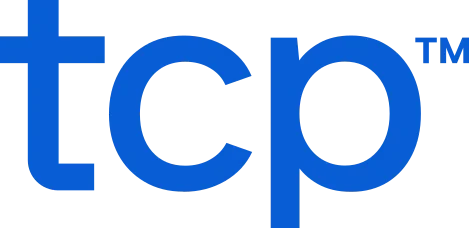Building efficient employee schedules is complex — especially for organizations managing 24/7 operations, compliance requirements, and employee expectations. Outdated tools and manual processes make it tough to create a scheduling system that actually works. Add in labor laws, union agreements, and staffing shortages, and things get even more complicated.
Sound familiar? You’re not alone. One option worth considering is the 2-2-3 shift schedule. When managed with the right tools, this model can help your organization boost productivity, meet demand, and keep your workforce engaged.
In this guide, we’ll cover the basics of what is a 2-2-3 schedule, its benefits and drawbacks, and how modern employee scheduling software makes it easier to implement and manage effectively.
What is a 2-2-3 shift schedule?
A 2-2-3 schedule — commonly called a Panama schedule — is a type of shift schedule organizations use to establish 24/7 operational coverage. This approach typically divides employees into four teams, each working two consecutive 12-hour day shifts, two full days of rest, and then another three consecutive days of work. This pattern repeats biweekly, except that the second week begins with two days off, followed by two days on, and then another three days off.
This cyclical pattern provides consistent coverage while balancing rest and work periods. Organizations in many different industries like public safety, healthcare, manufacturing, and customer support often rely on the 2-2-3 model to maintain around-the-clock operations.
What are industries that use a 2-2-3 shift schedule?
Panama schedules support compliance with labor laws and allow organizations to maintain their operations with a set number of employees, making them fairly common in industries that are open 24/7 or have extended operating hours. These organizations often choose 2-2-3 shifts because of the advantages it offers over more traditional scheduling models. Some of these industries include:
- Police stations/law enforcement, fire departments, emergency medical services (EMS), and emergency communications centers (dispatch)
- Healthcare organizations, particularly hospitals, nursing homes, and other facilities that offer round-the-clock care
- Manufacturing companies that operate continuously to keep up with product demand
- Customer support centers that provide customers with phone or live chat assistance with products or services 24/7
Advantages of a 2-2-3 shift schedule
Managing complex schedules with rotating shifts, availability changes, and skill requirements can be exhausting — especially in public safety and healthcare. The Panama schedule allows agencies to meet demand efficiently while giving employees predictable time off. It’s particularly helpful for reducing absenteeism and improving shift coverage.
Some advantages of implementing a 2-2-3 schedule include:
Gives employees more consecutive time off
A few days off here and there are great, but several consecutive days of rest are even better — especially for professionals who work long hours. With the 2-2-3 schedule, workers have more full days off in longer stretches, allowing them adequate time to enjoy their personal lives and feel refreshed and productive when they return to work. Considering that 48% of people would consider leaving their jobs if it prevented them from enjoying their lives, it’s clear that a scheduling approach that better supports your employees’ ability to take adequate time to unwind is crucial to reducing burnout and turnover.
Increased productivity
Although employees who work for organizations with 24/7 or extended operating hours must notoriously work longer than average shifts, the 2-2-3 schedule breaks up the blocks of time spent on the job so staff can maximize their working hours without burning out. When employees know they have an extended period off on the horizon, it makes it easier for them to maintain their productivity during long workdays.
Supports a healthy work-life balance
As a competitive and empathetic employer, supporting both productivity and employee well-being is key to long-term success. A Panama schedule promotes a healthier work-life balance by making it easier for employees to plan personal time, rest, and family obligations without sacrificing professional responsibilities.
A recent survey found that 53% of respondents would prioritize their health and well-being over work — highlighting just how important it is to implement schedules that support both. By adopting an approach that values rest as much as output, you show your workforce that their well-being matters, and in return, they’re more likely to stay engaged and perform at their best.
Prevents overlapping shifts
With a 2-2-3 schedule, each employee works 12-hour shifts, with four different teams working varying hours (e.g., 6 am – 6 pm versus 6 pm – 6 am). Unlike other models, which may require an additional team to report mid-shift (e.g., 4 pm and 4 am), the Panama schedule requires no overlap, so the organization doesn’t have to pay additional staff during the intersecting period. This can lower payroll costs by minimizing the number of hours worked beyond what’s needed for minimum coverage.
Disadvantages of a 2-2-3 shift schedule
Depending on your specific operation, workforce, toolset, and constraints, implementing a 2-2-3 schedule can also present some challenges. Some possible disadvantages include:
- May disrupt employee sleep — Because 12- and 24-hour shifts often require employees to work long hours on multiple consecutive days, it can contribute to poor sleep patterns that impact health, productivity, satisfaction, and even safety. Properly managed Panama shifts can help prevent extreme exhaustion by allowing adequate time for rest, making it easier and safer for employees to do their jobs.
- May lead to health issues — When not managed correctly, rotating shifts have been associated with increased risks of cardiovascular disease and other stress-related conditions. This typically results from poor diet, insufficient sleep, and high stress levels, all of which can be mitigated with optimal scheduling and shift management.
- Requires employers to adhere to strict state labor laws — In addition to complying with any other labor laws relevant to your specific industry and organization, you’ll need to closely examine those that may impact your ability to implement a 2-2-3 schedule. In California, for instance, employers must conduct a poll before leveraging a 12-hour shift pattern, allowing employees to determine whether the organization should adopt the model. If two-thirds of employees agree with the approach, the agency must mail the approving results to the Department of Industrial Relationships for legal verification. Organizations must be aware of local and federal labor law compliance requirements.
- Requires employees to work weekends — The flipside of having every other Friday through Sunday off is that employees also have to work every other weekend — a sacrifice some workers may find challenging. While some other shifts allow employees to work different days depending on the week, a Panama schedule requires them to follow the same pattern and thus work alternating weekends. However, this can also be seen as a benefit for employees who prefer fixed schedules.
- Subjects agencies to regular overtime costs — From a budget standpoint, an accurate 2-2-3 schedule often adds up to 84 hours per pay period, meaning every employee might make four hours of overtime during each pay period. While some variations of the Panama schedule help organizations avoid this, it’s sometimes a negative factor when evaluating potential scheduling options.
- Doesn’t allow employees to earn optimal shifts with seniority — The idea of the 2-2-3 schedule is that every employee in the agency works the same schedule. This can be perceived as a disadvantage for more senior members, as it means that regardless of how long they’ve been at the organization, they’ll never be able to earn a “better” schedule.
While these concerns are valid, being mindful of their potential to impact your organization when building and managing your 2-2-3 schedules can help your team prevent and resolve them.
Variations of a 2-2-3 shift schedule
Agencies can use several 2-2-3 shift schedule variations that are, to some degree, interchangeable. However, each adaptation has distinct details that may make one a better fit for your agency and workforce than another. Some popular variations of the Panama schedule include:
Panama Plus shift schedule
In addition to the traditional 12-hour shifts in a 2-2-3 schedule, a Panama Plus pattern includes some eight-hour days. Within one of five teams (instead of four), each employee works two 12-hour shifts, takes two days off, works two 12-hour shifts, then works one 8-hour weekday shift before repeating the cycle.
Advantages
- Employees work shorter, 8-hour shifts in addition to their longer, 12-hour shifts, which can help alleviate some issues of stress and exhaustion.
- This rotation type prevents staff from working more than two consecutive night shifts during a single cycle.
Disadvantages
- Because employees alternate between different shift lengths and start times, their sleep may become more disrupted than with a more traditional 2-2-3 pattern.
Pitman shift schedule
With a Pitman schedule, the organization uses a 14-day cycle in which each employee works seven 12-hour shifts. The four teams alternate between two day or night shifts, two days off, and three additional day or night shifts. The cycle repeats each week except for the second week, which begins with two days off.
Advantages
- This version of 2-2-3 adjusts the schedule to avoid the four extra hours that otherwise make each employee eligible for overtime every pay period.
- Employees alternate between day and night shifts, so everyone has a fair opportunity to work each type of shift.
Disadvantages
- Because each employee must work both day and night shifts, they can struggle with their circadian rhythms, leading to poor sleep and other health conditions.
DuPont shift schedule
A DuPont schedule requires employees to work 12-hour shifts throughout a 28-day cycle. Workers alternate between an equal number of day and night shifts throughout a single rotation and have three consecutive days off every other week. Then, employees get a whole week off from work at the end of the cycle. The pattern works in these four stages:
- Stage 1: Work four nights in a row and then have three days off.
- Stage 2: Work three-day shifts, have one day off, and then work three-night shifts.
- Stage 3: Have three days off, and then work four shifts.
- Stage 4: Have seven consecutive days off.
Advantages
- One full week off at the end of each 28-day cycle provides plenty of time for employees to spend with their friends and family outside of work.
- Employees with longer commutes to the job have significant time between one cycle and the next, which can help them recover before starting the next rotation.
Disadvantages
- Because employees have to wait a full three weeks to earn a long break from work, fatigue may set in and negatively impact their productivity towards the end of a cycle.
The key to a successful 2-2-3 schedule — regardless of the variation you choose — is ensuring that it meets your organization’s operational requirements and your employees’ needs.
How to implement a 2-2-3 shift schedule
Although Panama schedules can be challenging to develop and implement, following some simple guidelines can help your team establish an efficient scheduling process that empowers your workforce. Here are some of the best practices for getting started with a 2-2-3 shift schedule:
Communicate with your team
An effective 2-2-3 schedule relies on your teams’ ability to hand tasks off properly, show up when and where they’re needed, follow shift policies, and provide real-time scheduling updates as they occur. Create and communicate your employee schedules in advance so workers always know when they’re on and can request time off without throwing a wrench in your entire operation.
Define appropriate shift start times
With a 2-2-3 schedule, you can establish start times that align with your organization’s and employees’ needs. For example, you could implement 7 a.m. and 7 p.m. shifts instead of 3 p.m. and 3 a.m. to help employees avoid peak rush hour and make attending to their personal lives more manageable. Take some time to speak to your employees and better understand which start times they might prefer so you can align their needs with the organization’s needs. Engaging employees in this process supports better workforce management and satisfaction.
Look for signs of fatigue
Fatigue can be hard to spot among 2-2-3 shift workers as they may not feel their energy crash until after their busy shift ends. For instance, in public safety, they’re generally on the move and running on adrenaline, so it may not be easy to sense whether or not they’re approaching burnout. It’s essential to take the pulse of your workforce often by asking about their fatigue levels before it’s too late. You can also watch for signs of exhaustion, such as slow reaction times, inability to concentrate, and forgetfulness.
Encourage employees to take breaks
While states determine whether meal breaks are legally required, employers often provide short breaks throughout workers’ shifts. This can help combat fatigue and boost morale, especially in industries like manufacturing and healthcare. Twelve-hour shifts are usually both physically and mentally draining, and breaks give workers time to step away and regroup.
Breaks shorter than 20 minutes are still considered compensable under federal law, so it’s important to implement tools that make it easy for employees to log their breaks and for managers to monitor their activity. Some platforms offer mobile apps that automate short break tracking, documentation for legal compliance, and report generation to identify patterns and improve the employee experience.
Keep workspaces adequately lit
Working 12-hour shifts for several consecutive days can profoundly impact an employee’s circadian rhythm and lead to serious issues, such as decreased cognitive performance, altered stress response, and depression. To mitigate these potential issues, be sure to optimize lighting throughout employee workspaces to mimic outdoor daylight as much as possible. While this isn’t always possible in the field, keeping areas like plant floors, medical units, and break areas well-lit may help employees stay awake and alert.
Use automated scheduling software
Creating and managing 2-2-3 schedules can be time-consuming and burdensome, mainly if your team uses outdated or manual tools. Everyday factors like last-minute changes, scheduling errors, and shift trades can create a domino effect that leaves your team scrambling to ensure coverage, resulting in a frustrated, exhausted, and inefficient workforce.
You can streamline your 2-2-3 shift scheduling process by implementing employee scheduling software that instantly considers worker availability, preferences, and more. Powerful tools with 24/7 self-service access can make it easy to get the right workers in the right place at the right time — all without overworking your already busy staff. While many scheduling tools are on the market, the best software is fully configurable to your agency’s complex needs.
Transform your 2-2-3 shift scheduling process
Building an effective shift schedule — whether it’s a Panama schedule or another rotating model — requires more than just good intentions. No matter how efficient your shift model is, it won’t deliver results without the right tools behind it. Your organization may face issues like improper coverage, underworked or overworked employees, and labor law compliance risks.
Investing in employee scheduling software gives your organization the structure and flexibility needed to manage complex staffing demands, reduce compliance risks, and support employee well-being. By automating key processes and improving scheduling accuracy, you can create a more balanced, cost-effective operation — and ultimately build a stronger, more resilient workforce.
TCP Software’s employee scheduling, time, and attendance solutions are flexible and scalable to accommodate your organization and employees as you grow.
From TimeClock Plus, which automates even the most complex payroll calculations and leave management requests, to Humanity Schedule for dynamic employee scheduling that saves you time and money, we have everything you need to meet your organization’s needs, no matter how unique.
Plus, with Aladtec, we offer 24/7 public safety scheduling solutions for your hometown heroes.
Ready to learn how TCP Software takes the pain out of employee scheduling and time tracking? Speak with an expert today.
What to read next
Explore all resources



